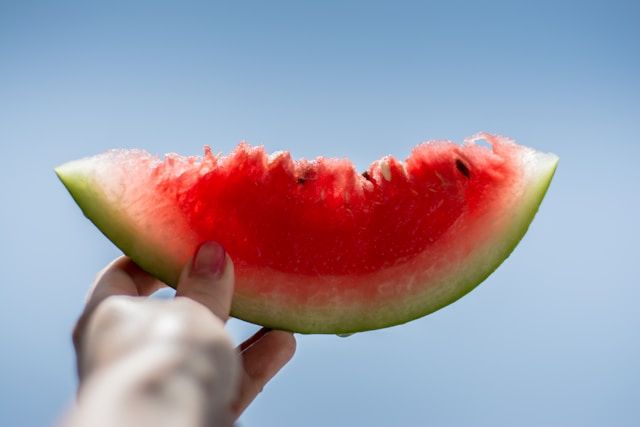.svg)


Ever heard someone say, “Don’t eat watermelon, it’s full of sugar”? Maybe you’ve avoided it yourself, picturing your blood sugar rocketing after one juicy slice. But is this fear justified? While watermelon has a high glycaemic index (GI), its glycaemic load (GL) is surprisingly low.
This real-life mix-up is the perfect way to understand two simple but powerful concepts: GI and GL, and why they matter if you want to manage your weight or keep your blood sugar stable.
Think of GI as the speed limit for carbs. It measures how fast 50 grams of digestible carbohydrate in a food will raise your blood sugar compared to pure glucose. Foods are ranked on a scale of 0 to 100.
Low GI foods, 55 or below, raise your blood sugar more slowly. Think whole oats, lentils and apples.
Medium GI, 56 to 69, has a moderate effect. That includes grapes, raisins and even ice-cream.
High GI foods, 70 or more, raise your blood sugar fast. These are your cornflakes, white bread and boiled potatoes.
The higher the GI, the quicker the sugar rush.
GI is only half the story. It tells you how quickly a food can raise blood sugar per gram of carbs, but not how much carbohydrate you actually eat in a portion.
This is where GL comes in. It combines both quality and quantity.
GL is calculated by multiplying a food’s GI by the grams of available carbs per serving, then dividing by 100.
So that watermelon? Its GI is about 80, which is high, but a typical wedge has only about 6 grams of digestible carbs, giving it a GL of around 5. That’s actually low. So you can enjoy a slice on a hot day without worrying about wild sugar swings.
When your blood sugar shoots up fast, your body releases a surge of insulin. Frequent big spikes can lead to energy dips, more hunger and, over time, poor glucose control.
Low GI and low GL foods help keep your sugar and insulin levels steadier, so you feel fuller for longer. If you are trying to lose weight, this can make it easier to say no to unnecessary snacking. If you have diabetes or pre-diabetes, it can make blood sugar management much smoother.
Research shows that low GI and GL eating patterns can modestly lower HbA1c, which is a long-term blood sugar marker, and help with weight management. But calorie balance still matters most for weight loss.
Think of it this way: choosing low GI and GL carbs helps you avoid energy highs and lows that can lead to overeating. It makes it easier to stick to a healthy eating plan over time.
Here’s how some everyday foods compare.
Apple, one medium: 🟢 GI, 🟢 GL
Lentils, one cup cooked: 🟢 GI, 🟢 GL
Peanuts, small handful: 🟢 GI, 🟢 GL
Skimmed milk, one glass: 🟢 GI, 🟢 GL
Brown rice, one cup cooked: 🟢 GI, 🟡 GL
Oats, one bowl cooked: 🟢 GI, 🟡 GL
Banana, one medium: 🟢 GI, 🟡 GL
Watermelon, one wedge: 🔴 GI, 🟢 GL
White bread, one slice: 🔴 GI, 🟢 GL
Sweet potato, medium: 🔴 GI, 🟡 GL
White rice, one cup cooked: 🔴 GI, 🔴 GL
Cornflakes, one bowl: 🔴 GI, 🔴 GL
💡Swap smartly.
Choose whole grains and legumes instead of refined carbs. Quinoa or lentils instead of white rice, for example.
💡Keep an eye on portions.
Even low GI foods can send your GL up if you overdo it.
💡Combine for balance.
Add protein, fibre and healthy fats to your meals. They slow digestion and help blunt sugar spikes.
💡Think long term.
You do not need to memorise every GI value. Just aim for more natural, minimally processed foods.
The bottom line
GI and GL are simple tools to help you choose carbs that work for you. They help you avoid sudden sugar highs and lows, keep you feeling fuller for longer and make healthy eating easier to stick to.
So next time someone warns you about watermelon, you’ll know better. It is not just about how fast sugar hits your bloodstream, but how much is really there.
Eat smart, enjoy your food and keep your plate colourful. Your body will thank you for it.
If you enjoyed this article, check out our Podcast on Watermelon, sugar spikes and glycaemic balance.
»» Join our next webinar
»» Cracking the carbohydrate code
»» Wednesday, 23 July
»» Register here